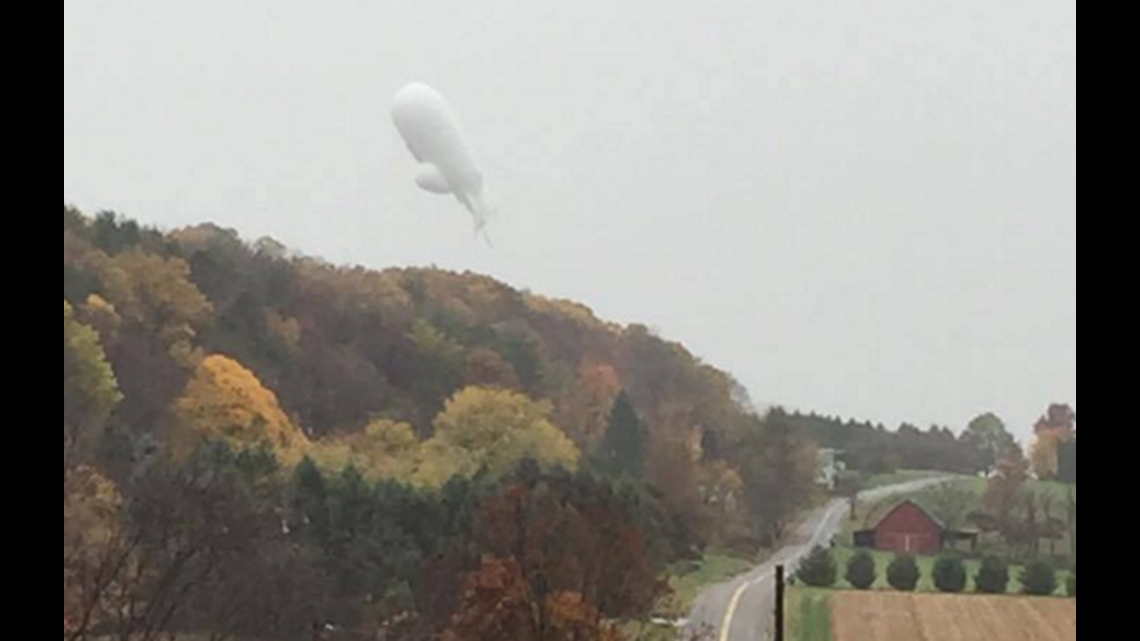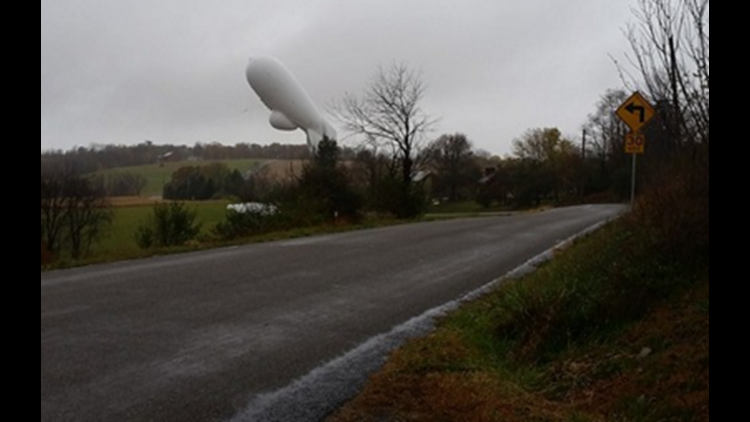BLOOMBERG, Pa.— A blimp associated with NORAD’s surveillance of the East Coast that became untethered from its mooring in Maryland Wednesday morning and floated over Pennsylvania has landed, according to Pennsylvania State Police, WNEP reports.
No one was injured, but as many as 24,000 lost power. A cable connected to the untethered JLENS blimp dragged along the ground in Bloomsburg, Pennsylvania, and caused massive power outages, Columbia County Department of Public Safety Director Fred Hunsinger said.
Two F-16s scrambled from the New Jersey National Guard tracked the JLENS aerostat, a Pentagon official said, after the aircraft came loose from its mooring station in Aberdeen Proving Ground, Maryland, just outside of Washington.


JLENS, which is short for Joint Land Attack Cruise Missile Defense Elevated Netted Sensor System, is a system of two aerostats, or tethered airships, that float 10,000 feet in the air. The helium-filled aerostats, each nearly as long as a football field, carry powerful radars that can protect a territory roughly the size of Texas from airborne threats.
They provide 360 degrees of defensive radar coverage and can detect and track objects like missiles and manned and unmanned aircraft from up to 340 miles away.
JLENS can also remain aloft and operational for up to 30 days at a time.
Shortly news broke about the blimp, Pennsylvania Gov. Tom Wolf said state officials were “closely monitoring” the situation.
“The Governor’s Office is in communication with the Pennsylvania Emergency Management Agency, the Pennsylvania State Police, the National Guard, and the appropriate authorities with the federal government,” the statement said.
Raytheon, which produces the aircraft, described the likelihood that the tether would break as “very small.”
“The chance of that happening is very small because the tether is made of Vectran and has withstood storms in excess of 100 knots,” the Raytheon website states. “However, in the unlikely event it does happen, there are a number of procedures and systems in place which are designed to bring the aerostat down in a safe manner.”



